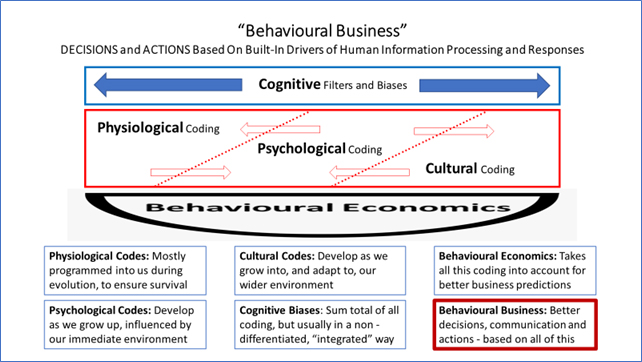Behavioural Business
The sum total of the different imprints, or ‘coding’, can be described as ‘cognitive biases’. Most of the time we deal with the information we receive through our imprinted shortcuts, or cognitive biases. Whichever level we operate at - physiological, psychological, cultural - the fact is that we react like human beings to everything, not like robots. Our survival, emotional and cultural reactions are always there. Our brain does not allow us to act like ‘logical machines’.

Behavioural economics already discovered this and uses it to make better predictions. Kahneman, Thaler and others take into account the many ‘human’, cognitive biases embedded in us. However, to get the best results we should not stop at making better predictions. We need to make better decisions to get there. In other words, we have to take behavioural economics further. We need to understand the basics of ‘behavioural business’.
The behavioural business approach takes all the available coding effects into account when making decisions. Sometimes these effects are obvious - at least to one side of the parties. Our ‘asymmetric decision making model’ helps in those cases. Sometimes the effects are hidden but can be brought out. For example, non-traditional segmentation can be overlain regular research to bring out hidden decision drivers (see: ‘Future Proof Predictive Power’).
However, some types of individual biases cannot be identified and eliminated. In those cases it is still possible to avoid the cognitive decision traps by designing a decision architecture that will automatically filter their effects out. This shows the true power of applying behavioural business practices.